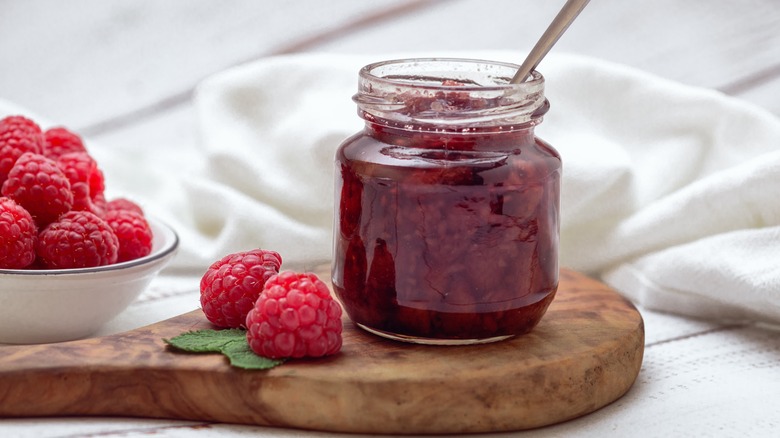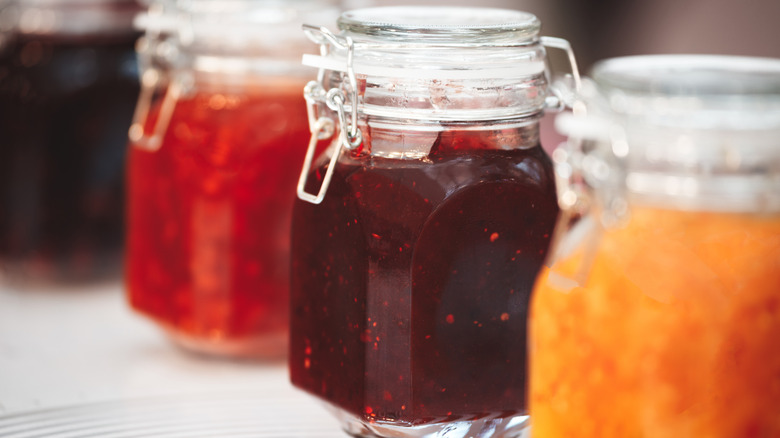Do You Really Need To Refrigerate Jam And Jelly?
Is refrigeration an absolute must? No. Is it helpful for extending the shelf life of an opened jar? Absolutely. Like honey, jellies and jams are low in water activity and high in sugar, creating a hostile environment for bacteria. Sugar is also a powerful preservative, so there's very little risk of them expiring before you eat them. Most jellies and jams have a pH balance between 3.00 and 4.50, making them just acidic enough to keep most dangerous microorganisms from setting in.
However, the biggest threat to any fruit spread, from marmalade to fruit butter, is mold. Mold is a fungus, meaning it tolerates the hostile conditions of low water, high sugar, and ample acid significantly better than bacteria. Once mold is visible on food, it's already burrowed its tendrils through the whole product. Much like bread if only one slice is moldy, jams and jellies with any visible mold should be thrown out immediately.
Storing an opened jar of jam or jelly in a cool, dark area helps keep it fresh, and refrigerating it is an added defense. While molds can certainly survive in low temperatures, refrigerators are so cold that they slow their growth. How long an open jar of jelly will last in your fridge depends on its sugar content, acidity, and how clean your fridge is. However, jams and jellies pre-date fridges, so there are several ways you can combat mold growth and deterioration to keep them fresh.
How to preserve jellies and jams without refrigeration
Storing food items in dark places is one of the most common food storage tips out there. Light, particularly sunlight, causes jellies and jams to change color, making them less appetizing. This is especially true of low-sugar varieties as sugar acts as a potent preservative.
Humidity is a microorganism's best friend and should be avoided at all costs. Storing your fruit spreads in a dry place helps keep harmful bacteria and mold from growing on the surface of the jar or worming their way in through a previously opened seal. Keep them away from sources of moisture like stoves and sinks to maximize their longevity.
Intense heat and cold kills or slows the growth of bacteria and molds. But even cool temperatures between 50 and 70 degrees Fahrenheit go a long way toward preserving jams and chutneys (which are different). If you have a cellar or basement, these are ideal spots for long-term storage. In a kitchen, keep them away from sources of heat as well as windows and doors leading outside.
Only use sanitized utensils to scoop your spreads from their jars. Mold spores live in the air and eventually settle onto just about every surface possible. Sanitizing a knife or spoon before you dip them in a jar reduces the number of spores introduced to a full batch of jelly or jam, although spores floating in the air will still get in. Try to minimize the amount of time a jar stays open to mitigate mold growth.


